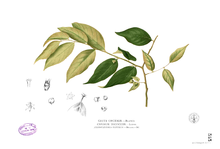|
Cleistanthus sumatranus
Cleistanthus sumatranus[3] is an accepted name of a tree species in the genus Cleistanthus (family Phyllanthaceae).[2][4] No subspecies are listed in the Catalogue of Life.[5] It is found in dense deciduous or evergreen forests, from sea level to approximately 700 m (2,300 ft) in Brunei, Cambodia, southern China, Indonesia, Malaysia, Philippines, Singapore, Thailand, and Vietnam. In Chinese, it is called 闭花木 bi hua mu[6] and in Vietnamese Cách hoa (Sumatra). DescriptionCleistanthus sumatranus is an evergreen tree, growing up to 18 m (59 ft) tall.[6] The leaves have 2–7 mm (0.079–0.276 in) petioles with elliptical leaf blades which are typically 30–100 mm (1.2–3.9 in) by 20–50 mm (0.79–1.97 in). Flowers are small, each with five sepals and five small petals (both male and female), with up to seven occurring in axillary fascicles, subtended by normal or smaller leaves, or on leafless spike-like axes. Flowering is typically from March–August; fruiting from April–October. The capsules are red and ovoid, approximately 10 by 10 mm (0.4 by 0.4 in), containing seeds which are usually single and up to 6 mm (0.24 in) in diameter.[6] References
External links
|
||||||||||||||||||||||||||||||||||
